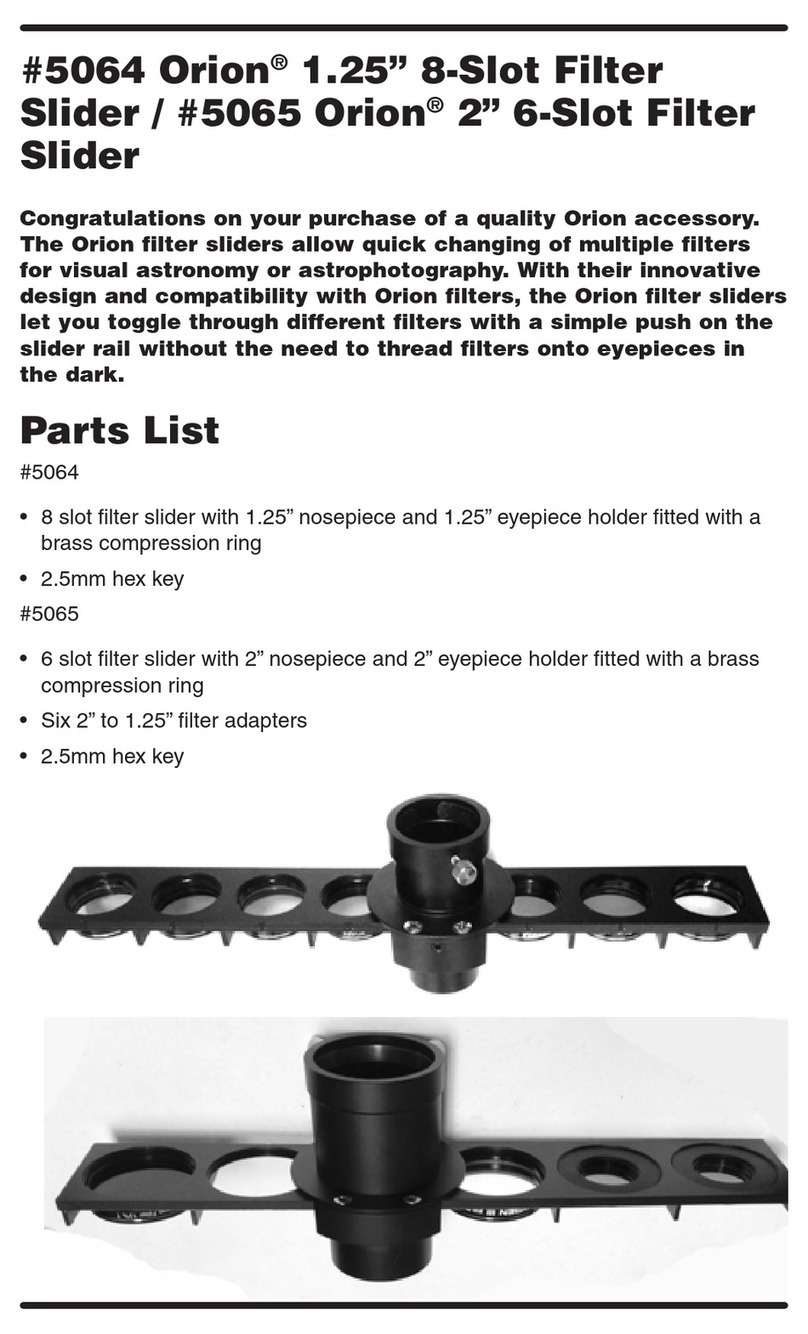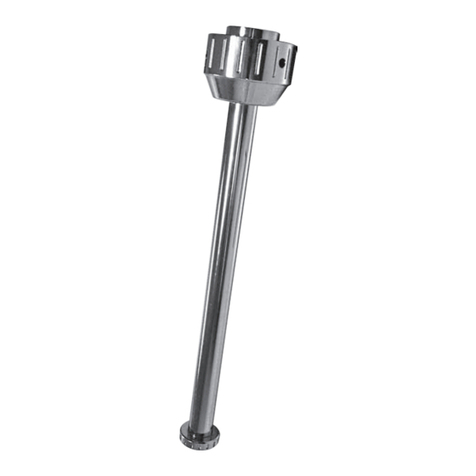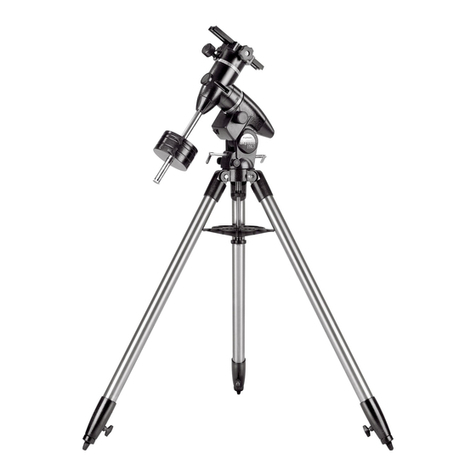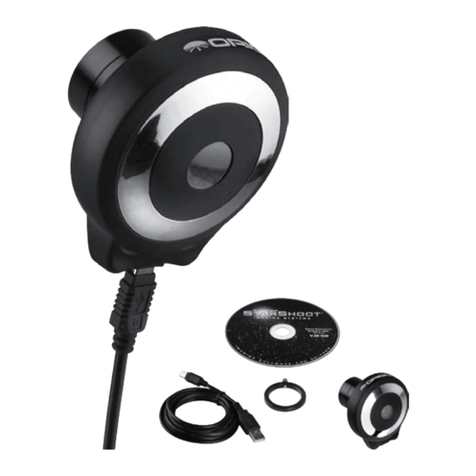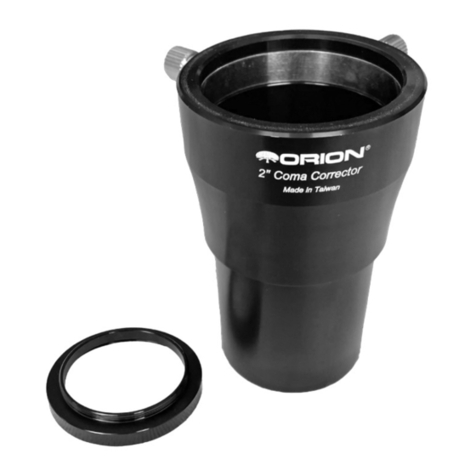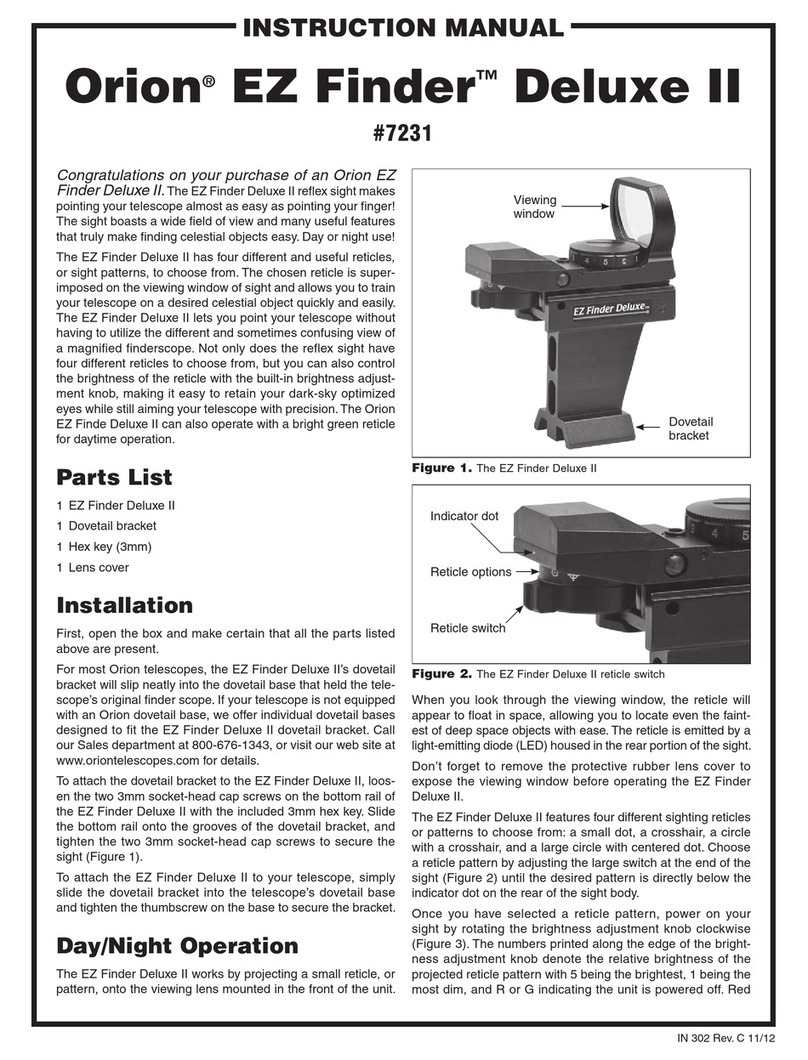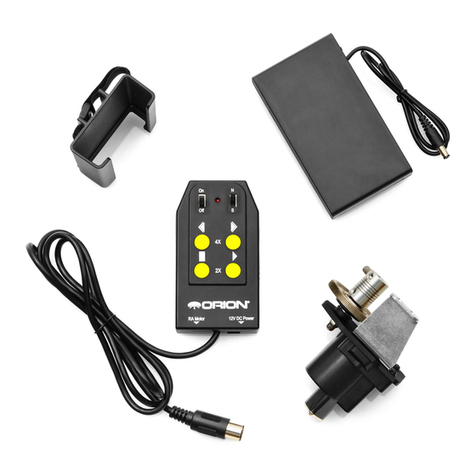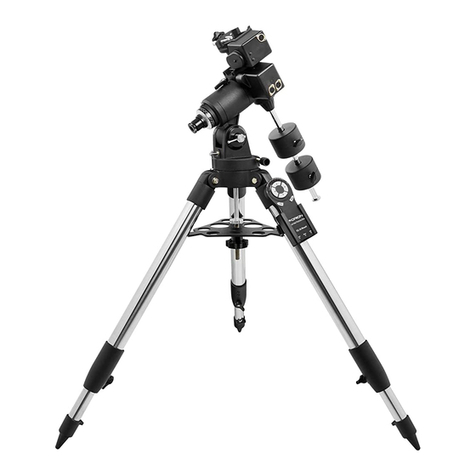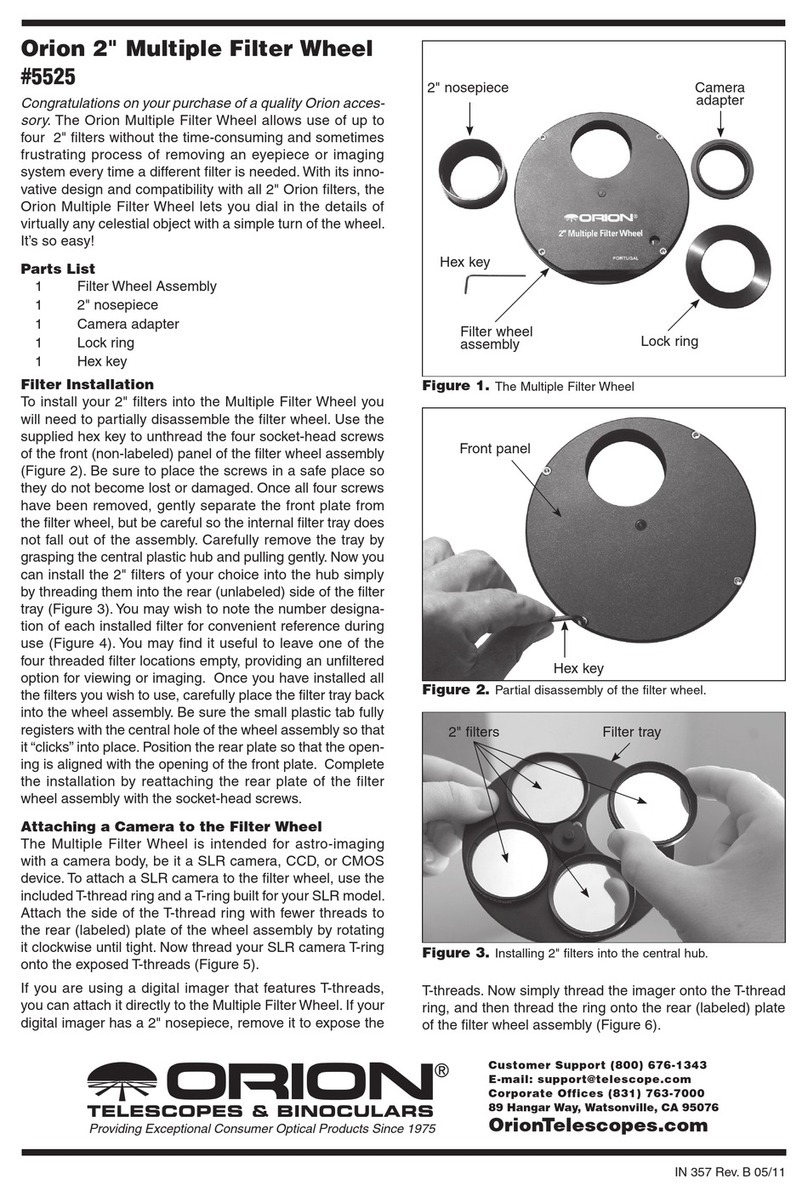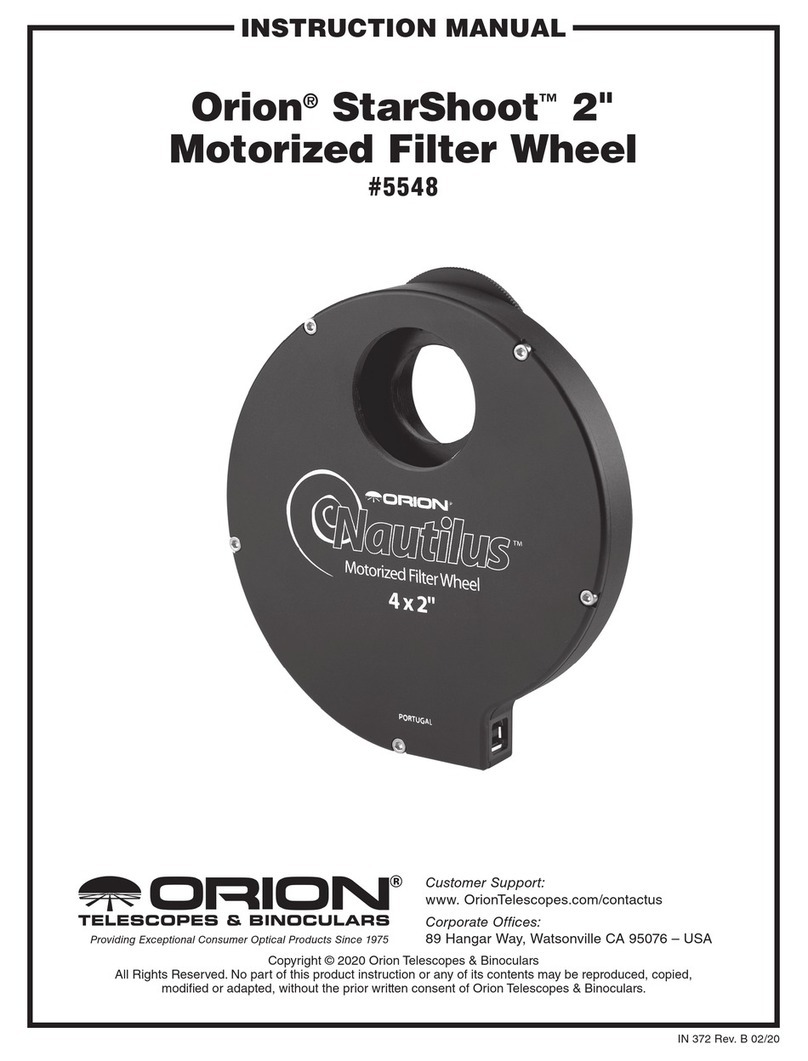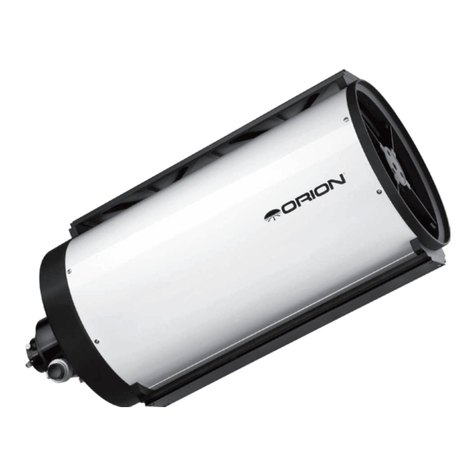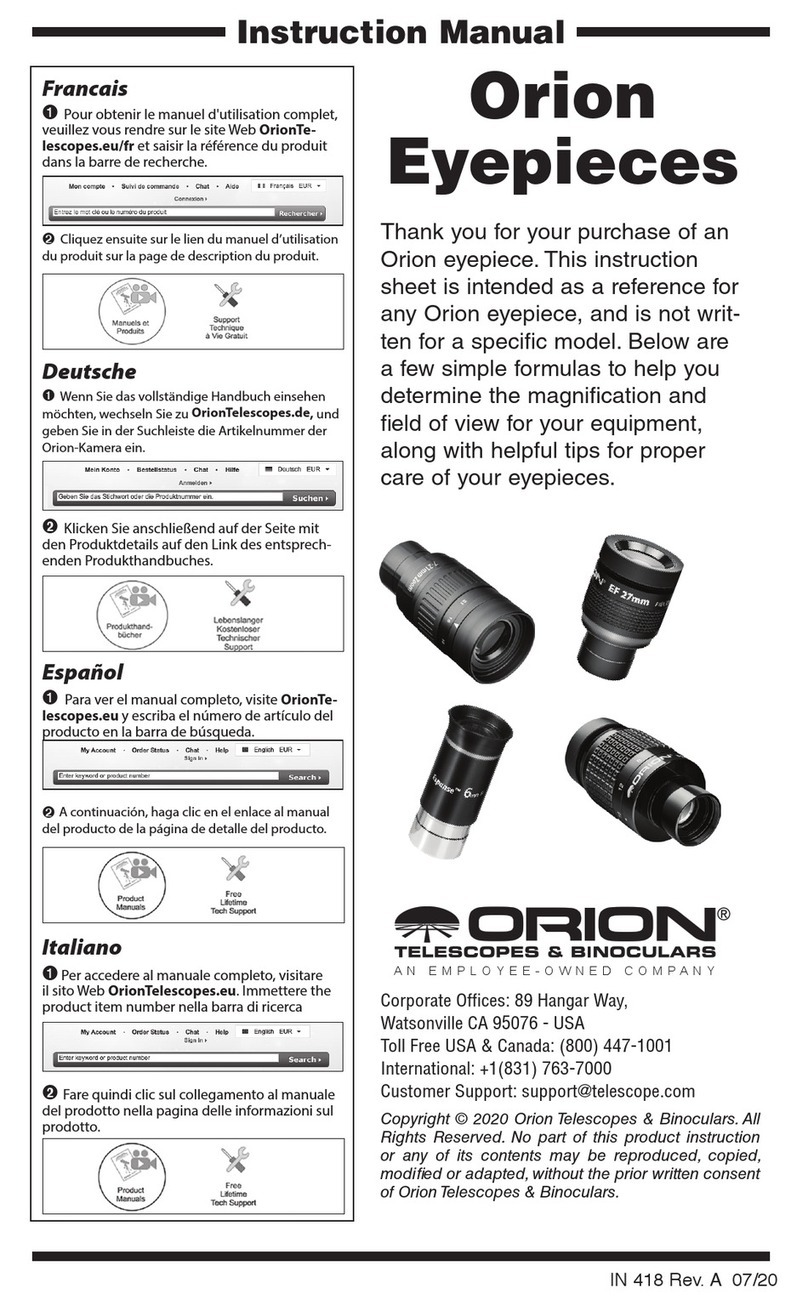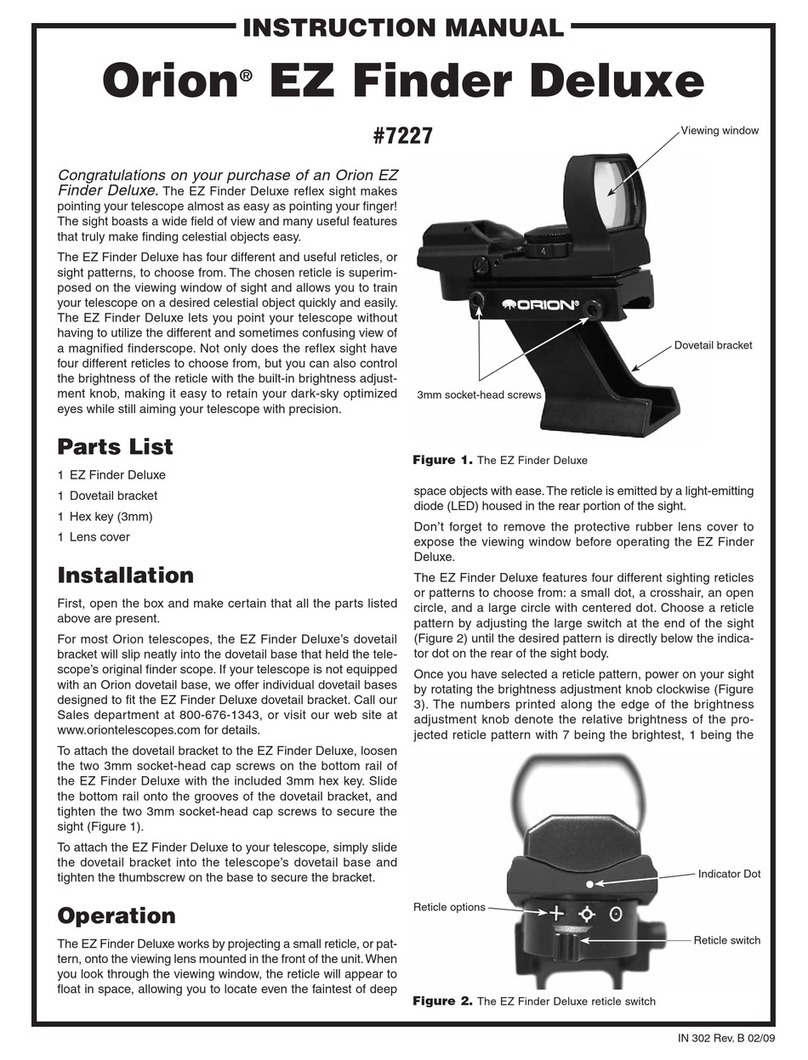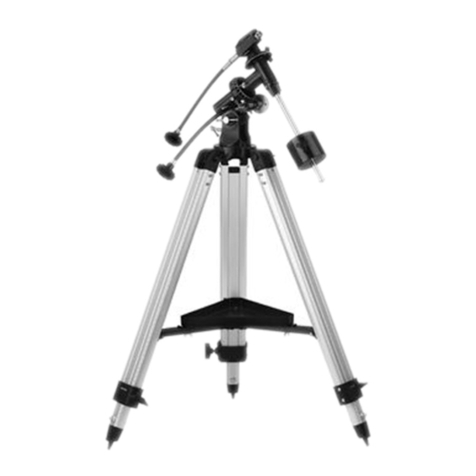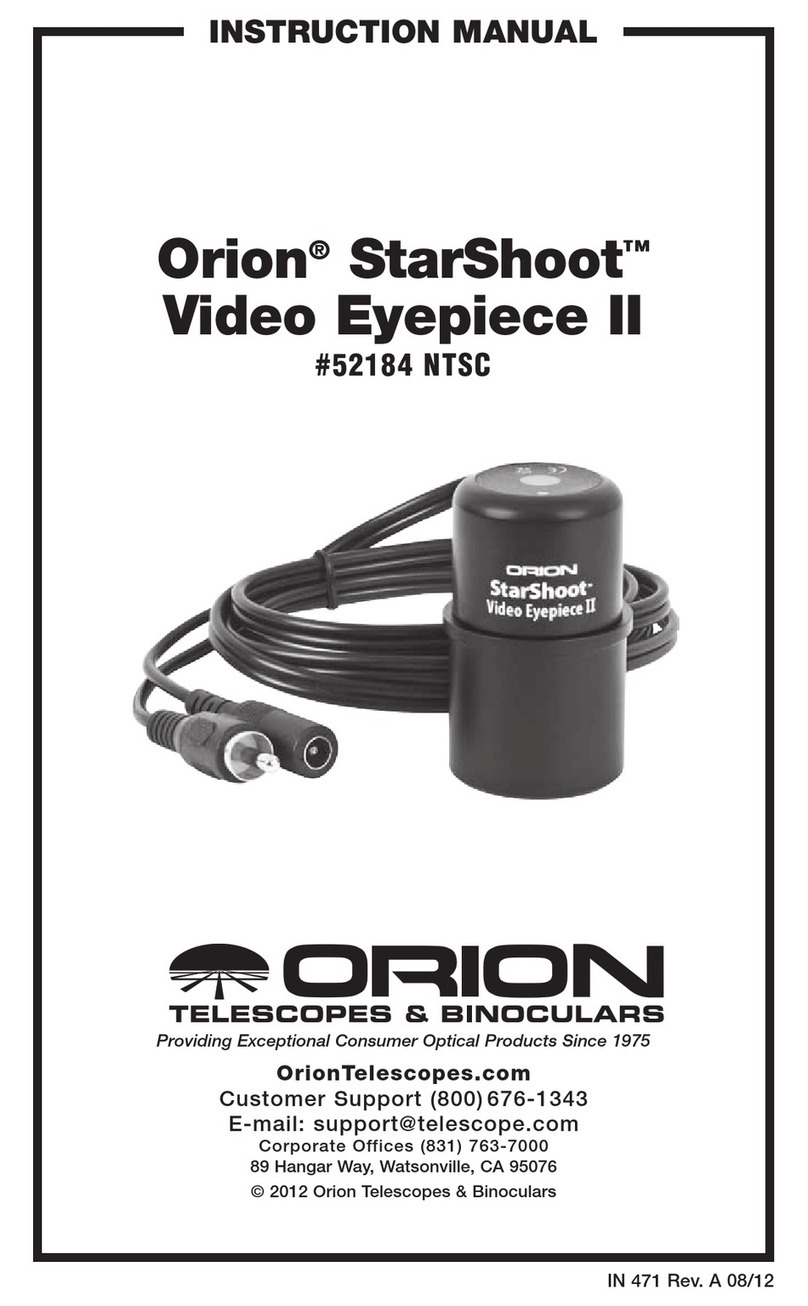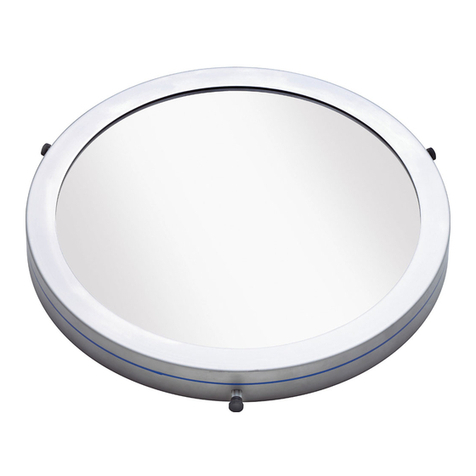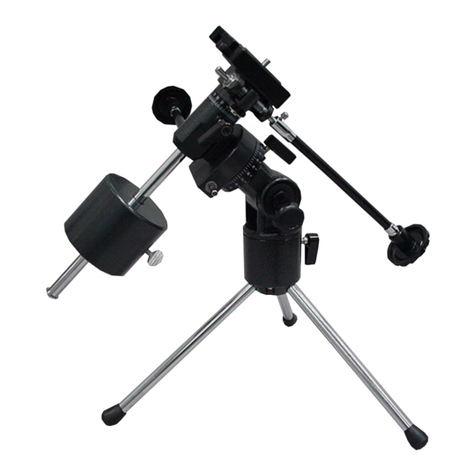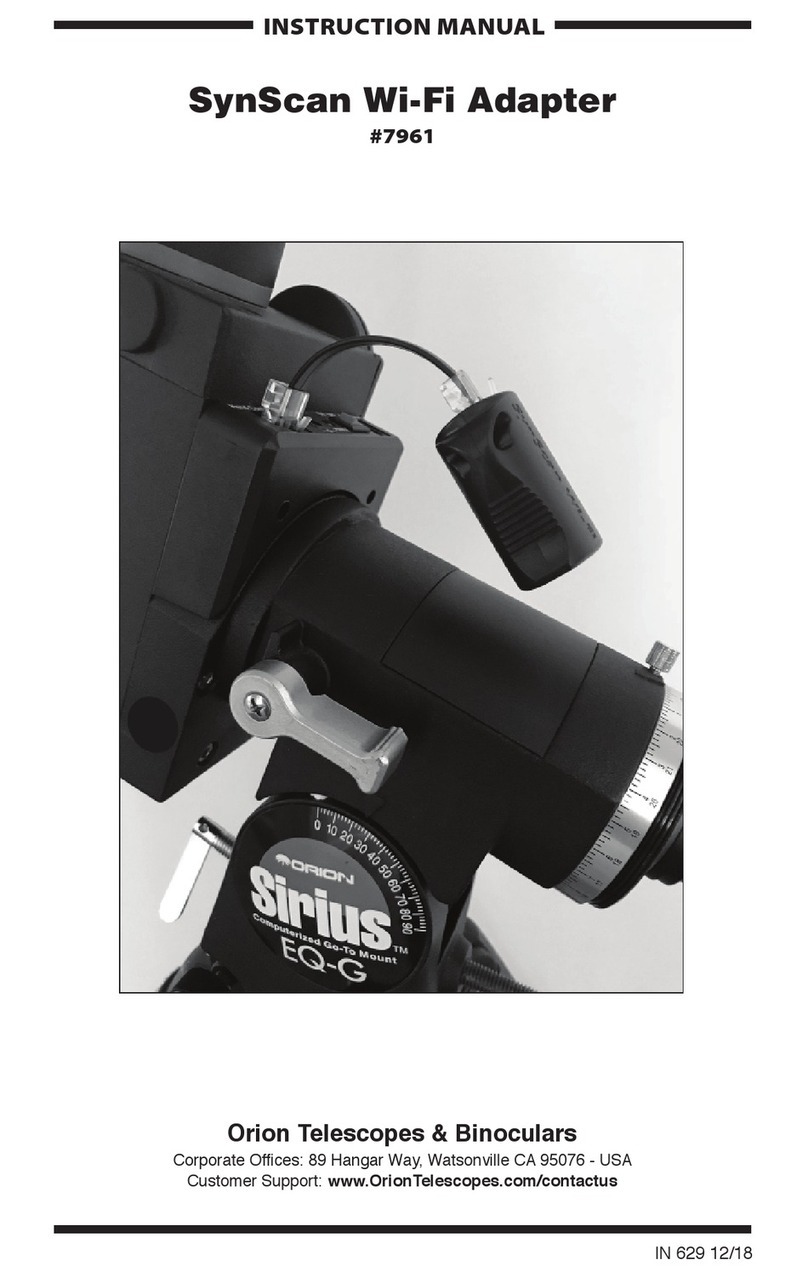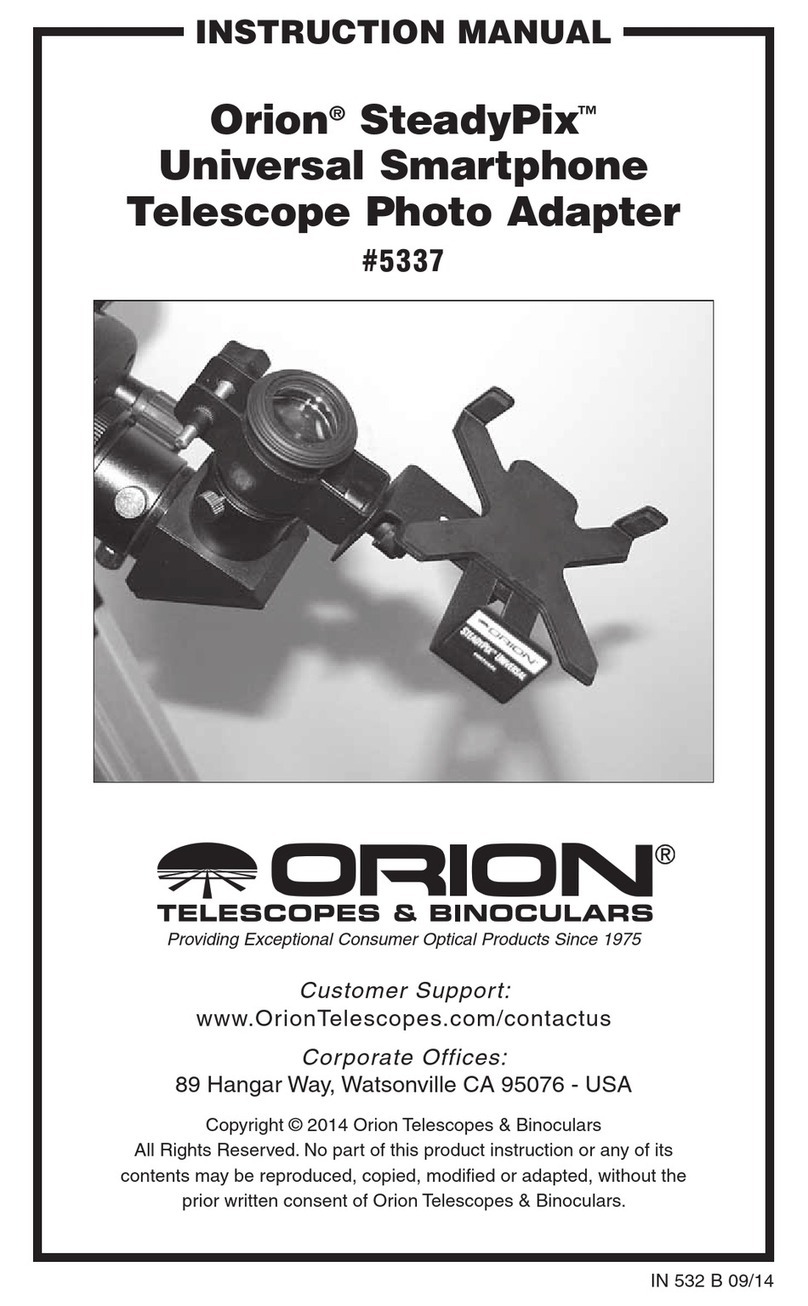
Orion®Film Solar Filters
IN 607 11/17
INSTRUCTION MANUAL
This Orion Film Solar lter is designed specically for safe
observation of the Sun through a telescope. It permits safe
observation of the Sun, allowing sharp, resolved views of
sunspots, penumbral detail, solar granulation, and lighter col-
ored faculae. They are also great for viewing solar eclipses
and planetary transits. All processes connected to this prod-
uct have been thoroughly tested.
Do not use a lter that shows any hole or tear! If you sus-
pect a defect, please contact us for return instructions.
All solar lters are covered by a limited liability warranty
from defects in material and workmanship.
Telescope Compatibility
Orion Film Solar filters are designed to fit specific Orion tele-
scope tubes. They are made from the dust covers for those
telescopes, which snap into the front opening of the tube. We
recommend these solar filters ONLY for the Orion telescopes
for which they were designed. (See the product descriptions
on www.OrionTelescopes.com for which filter fits which spe-
cific telescope models.) They may not fit properly on other
brands of telescope, which could result in eye damage
should the filter fall off during observation of the Sun or be
damaged when attempting to fit a filter on a telescope it was
not designed for
Pinholes and Filter Safety
Despite the thin, exible nature of the Orion Film Solar lter
material, it is actually a high-strength polymer that stands up
to considerable abuse. The coating on the polymer cannot
easily be rubbed off. It is applied on both sides of the lm.
Since it is nearly impossible for any manufacturer to produce
a lter coating that is completely pinhole-free, a few pinholes
may be found. Even if you nd a pinhole on one side of the
lter, however, it is likely that the other side is still coated, pro-
viding sufficient protection. However, if you nd a pinhole that
goes completely through the lter, do not use it.
Check the lter’s optical surfaces for any possible damage
before each use. The view through your telescope should be
comfortable and not appear excessively bright. Stop looking
immediately if the view is excessively bright.
WARNING: Never look directly at the Sun with
the naked eye or with a telescope – unless
you have a proper solar filter installed over the
front of the telescope! Otherwise, permanent,
irreversible eye damage may result.
Note that rippling or warping in the lm material is normal
with Film Solar lters and does not have any effect on the
image you will see or on the lter’s safety.
Using the Solar Filter
Make sure the lter ts securely onto the front opening of the
telescope. Extra felt strips are included. Please add to inside
of lter to add additional security if needed. If it feels loose
or comes off easily, DO NOT use it!
Keep the front of any nder scope covered with its opaque
objective cap or a couple layers of aluminum foil, if it is not
equipped with its own solar lter. Better yet, remove the nd-
er altogether when observing the Sun. An uncovered nder
scope is dangerous to look through. Even if you do not look
through it, however, unltered sunlight could melt internal
parts of a nder scope.
To aim the telescope with solar lter installed at the Sun with-
out aid of a nder scope equipped with a solar lter, you can
use the shadow cast by the telescope as a guide. Point your
telescope in the general direction of the Sun, and watch the
shadow cast by the telescope tube on the ground. Move the
tube gradually back and forth, up and down until the shadow
is the smallest it will get. The Sun should then be visible in
the eyepiece eld of view.
Allow the telescope and lter to equalize to the outside tem-
perature for at least 15 minutes. Direct sunlight may warm
the tube assembly enough to cause internal heat currents
that can degrade image quality, especially on dark-colored
telescopes.You might want to cover the tube assembly with a
light-colored cloth to help avoid this.
If possible, do not view over pavement or buildings, which
radiate heat. Those rising “heat waves” will reduce the sharp-
ness of the images you see through the telescope. Viewing
over grass will help avoid surface heat currents.
Removing the Solar Filter
Point the telescope away from the Sun before removing
the solar lter! Removing the lter while the telescope is
aimed at the Sun is dangerous if anyone is looking into the
eyepiece, and can damage the telescope if left pointed at
the Sun for too long.
Solar Photography
Orion Film Solar lters can be used for viewing and for
photography. By attaching a camera body to a telescope,
in effect using the scope as a telephoto lens, you can take
striking photographs of the Sun. Only attempt this if the
telescope is equipped with the proper solar lter.
Depending on the aperture and focal length of your tele-
scope and “seeing” conditions, you will need to experiment
Corporate Offices: 89 Hangar Way, Watsonville CA 95076 - USA
Toll Free USA & Canada: (800) 447-1001
International: +1(831) 763-7000
Copyright © 2020 Orion Telescopes & Binoculars.All Rights Reserved. No part of this product instruction or any of its contents
may be reproduced, copied, modied or adapted, without the prior written consent of Orion Telescopes & Binoculars.
AN EMPLOYEE-OWNED COMPANY
